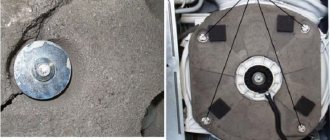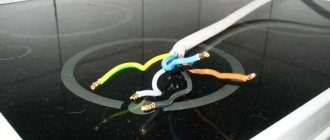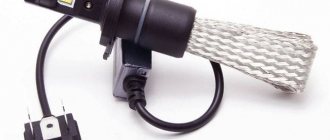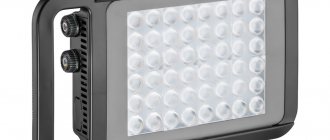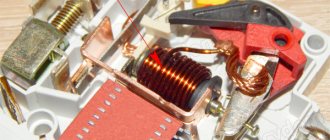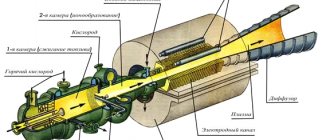The washing machine is noisy during the spin cycle, reasons:
- The transport bolts securing the tank have not been removed;
- The bearings have failed;
- There are foreign objects between the bank and the drum;
- The drum pulley is very weak;
- The tank is not secured properly and a counterweight is created.
First, it is worth conducting an initial diagnosis. You can try this yourself, without involving specialists. Perhaps the problem is entirely in small parts or things that have fallen under the drum.
In order to understand what this or that reason means, you need to understand it more. Let us now examine each problem separately.
Preventing blockages so that the pump does not make noise
To prevent unnecessary noise from occurring due to foreign objects, prevention is needed. You don’t have to do anything supernatural, just follow the basic rules for using the machine:
- soften water with special means;
- clean SMA parts from scale;
- Clean the filter after every 5th wash (or at least once a month);
- sort clothes, check pockets.
We hope you now know what to do to stop your washing machine from making noise anymore. If you still have questions, you will find comprehensive answers to them in the video:
The transport bolts securing the tank have not been removed
If the drum in the washing machine is noisy and vibrates a lot, the reason for this may be that the fastening transport bolts have not been removed.
In the standard position, the tank is secured with springs for shock absorption, but for safe transportation of the washing machine, the manufacturer additionally secures it with three bolts and secures them well.
After the machine is installed, these bolts must be unscrewed. This mistake is quite common when installing washing machines and is often made by experienced technicians. Before sounding the alarm, you need to calmly understand the problem and start small.
Noise standards
There is no such term as “buzzing loudly”; it is purely a subjective perception. The level of noise emitted by the machine is determined using special equipment. The maximum values should not exceed the values specified in the documentation; their values directly depend on the type of drive of the washing machine.
Direct drive washing machines can produce noise levels of 52-70 dB. For devices using belt transmission, the permissible values are slightly higher - 60-72 dB.
At home, it is unlikely that it will be possible to accurately measure noise levels, however, the threshold of the permissible value can be heard by ear. If the operation of the washing machine is perceived as background noise without causing discomfort, everything is fine. If the hum and crackling noises come to the fore during washing, drowning out other sounds, you should think about it. It is possible that the machine is faulty.
The washing machine bearings have failed
They can fail in any washing machine, regardless of its price and brand. This is a completely normal practice and you just need to come to terms with it.
If the washing machine starts to hum precisely because of the bearings, then this problem is very easy to fix.
- First, you need to unplug the washing machine so as not to harm yourself during repairs.
- Then press the drum with your hand and turn it clockwise.
- Then do the same thing, only in the other direction.
If the drum begins to crackle unpleasantly, then the problem is in the bearings.
Most often, the cause of failure lies in the seal bearings. When this unit fails, the washing machine begins to make a lot of noise and knock during the spin cycle, causing a lot of inconvenience to its owners.
In some washing machines the tank is sealed. And therefore it will not be possible to disassemble it to replace the bearings. You will have to endure and eventually come to terms with the fact that it is time to change your device.
How to fix the problem yourself
Clean the drum
If the drum is not properly cared for, it becomes dirty, covered with limescale and rust. The main way to avoid dirt is to use water softener when washing. There are several ways to clean heavy stains:
- Cleaning with citric acid. Pour 200 g of the substance into the drum and start the washing cycle. In case of heavy contamination, repeat the cycle several times.
- Use of chlorine-containing substances (bleach, etc.). Advantages: high cleaning properties. Disadvantage: damage to rubber parts. Therefore, it can be used no more than once a year.
- Specialized cleaning products. They clean well from contaminants and do not destroy the parts and mechanisms of the device. The disadvantage is the high price.
Check transport fastenings and remove them if present.
Shipping bolts secure the tank when transporting the washing machine. They are removed before the first start. Technological holes for mounting bolts are placed on the rear panel evenly around the perimeter. There are usually 4 of them and they are clearly visible. They are unscrewed using a socket head or a wrench from the product kit. The fastening bolts are equipped with plastic bushings. Parts must be stored for use when transporting the device.
Check that the machine is installed correctly (using a level)
The position of the washing machine is adjusted by twisting legs and controlled by a level.
- Place a level on the top cover along the front wall.
- By adjusting the front legs, achieve zero level deviation from the horizontal.
- Place a level along the side panel. Adjust the height of the rear legs to achieve a horizontal level.
Adjust the hatch seal
Due to wear and tear, after improper installation, the door sealing lip begins to come into contact with the rotating drum. This may cause damage or leakage. Remedy:
- For replacement, use a cuff designed for a specific machine model.
- Loosen the clamp and remove the seal from the hatch.
- Unscrew the front panel, check the installation of the cuff on the tank - there should be no distortions, wrinkles, damage, etc.
- To eliminate defects, loosen the fastening clamp and install the seal correctly.
- Secure the clamp without overtightening it.
Check if the machine is overloaded with laundry
Overloading laundry leads to premature failure of the washing machine. If the machine is not equipped with an automatic laundry weighing function, you need to use the following rule. The drum cannot be filled more than 2/3 of the volume; the hand must freely penetrate into its upper part. For woolen fabrics the requirements are stricter: no more than 1/3 of the volume is filled.
Foreign objects between the tank and drum
This problem is very common and many people face it very often. If your washing machine begins to make a lot of noise during operation, this may indicate that some “left” object has gotten between the tub and the drum.
Which is precisely the cause of this noise. Buttons, small items, etc. - all this can cause a lot of noise and it is not always possible to insure against this. Although turning clothes inside out before washing may help.
It is very easy to fix this problem - you need to loosen the fastenings of the heating element, after which you can remove the foreign object.
To do this, you can use tweezers and other available tools. After removal, it is necessary to return the fasteners to the reverse position, and clean and degrease the rubber gaskets.
Here is a short video with an example of such a malfunction. I think you can handle fixing such a simple problem yourself!
The main SM filter is clogged
If the washer makes a loud noise when rinsing, you should pay attention to the drain filter. Perhaps a foreign object (coin, key, paper clip) got into the trash can. In this case, the operation of the pump impeller becomes difficult and the machine begins to make noise.
The drain filter traps all debris that ends up in the drainage system of the washing machine. It is very easy to check and clean the plastic spiral. The procedure will take no more than 5-10 minutes.
Before unscrewing the drain filter, be sure to turn off the power to the washing machine.
Where is the "trash can"? Most washing machines have a drain filter located on the front, in the lower left corner. It is hidden behind a technical hatch or false panel. The algorithm of actions will be as follows:
- de-energize the SMA;
- disconnect the automatic machine from the water supply and sewerage;
- move the washing machine away from the wall;
- open the technical hatch door or remove the lower false panel (a thin screwdriver will help to remove the latches);
- slightly tilt the washing machine body back to raise the front by 5-10 cm;
- place a container under the machine in the area where the drain filter is located to collect water;
- using an emergency drain hose, remove the water accumulated in the system (remove the plug from the pipe and direct its end into the basin);
- Unscrew the waste filter plug half a turn, wait until the water flows into the container;
- remove the filter element.
After this, the filter should be cleaned and washed in warm water. You can soak it for a couple of hours in a concentrated solution of citric acid. You cannot treat plastic with boiling water - it can become deformed. Next, pay attention directly to the seat.
Shine a flashlight into the hole and remove all foreign objects from the machine. Afterwards, wipe the walls of the seat with a clean damp cloth to remove dirt. In the depths you can see the pump impeller - if hair and threads are wound around the blades, be sure to remove them from the part.
Having finished with the “cleaning”, you can put the drain filter in place. Make sure the spiral is level. Then you need to run a test wash. If there is no leakage, it means that the trash can was installed correctly.
Drum pulley is very weak
If even in free-running mode the drum begins to rotate, and during stable operation the machine makes a lot of noise, this may indicate that the drum pulley is very weakened.
This does not mean that the machine is being used incorrectly. The pulley fails for obvious reasons - the washing machine has been in use for a long time.
The problem could be a loose screw or nut. Once you have found a loose screw or nut, you need to tighten it and then use sealant for maximum effect.
The tank is not secured properly and a counterweight is created.
It is the counterweight that is responsible for ensuring that the tank is well fixed in the washing machine. It is secured with ordinary screws, which may simply loosen over time.
This causes increased noise. It is possible to determine that the fastenings are loose by visual inspection. To do this, you just need to remove the cover of the machine.
If after the screws were tightened the machine stopped making noise, then that was the reason. If this does not help and the noise when the machine operates continues, then this may indicate more serious problems that are best dealt with by a specialist.
You may be interested in another of our articles about malfunctions of household appliances - why the washing machine does not work.
Differences between direct and belt drive washers
Rotational motion can be transmitted from the motor to the drum shaft through a belt or electromagnetic system. LG owns a patent for Direct Drive technology, which is installed on most modern washing machines.
In a belt-driven SMA, the motor shaft is connected to the drum pulley using a narrow rubber belt. The intensity of rotation is controlled by the tachogenerator and motor brushes. Units with such a mechanism are usually noisier due to the large number of connecting elements.
In a direct drive SMA, the speed is set by an electromagnetic system, and the inverter motor rotates the drum without direct contact with it. This allows you to eliminate some breakdowns (for example, belt stretching, brush wear), increase the maximum speed and increase the tank load.
With identical technical characteristics, the inverter SMA promises to be quieter than the belt one. Due to the reliability of the direct drive, the risk of abnormal noise during spinning is also lower.
The belt drive also has an important advantage: if the weight is unevenly distributed in the tank, the rubber belt acts as an additional shock absorber. Direct drive mechanisms are more sensitive to uneven load distribution in the drum

